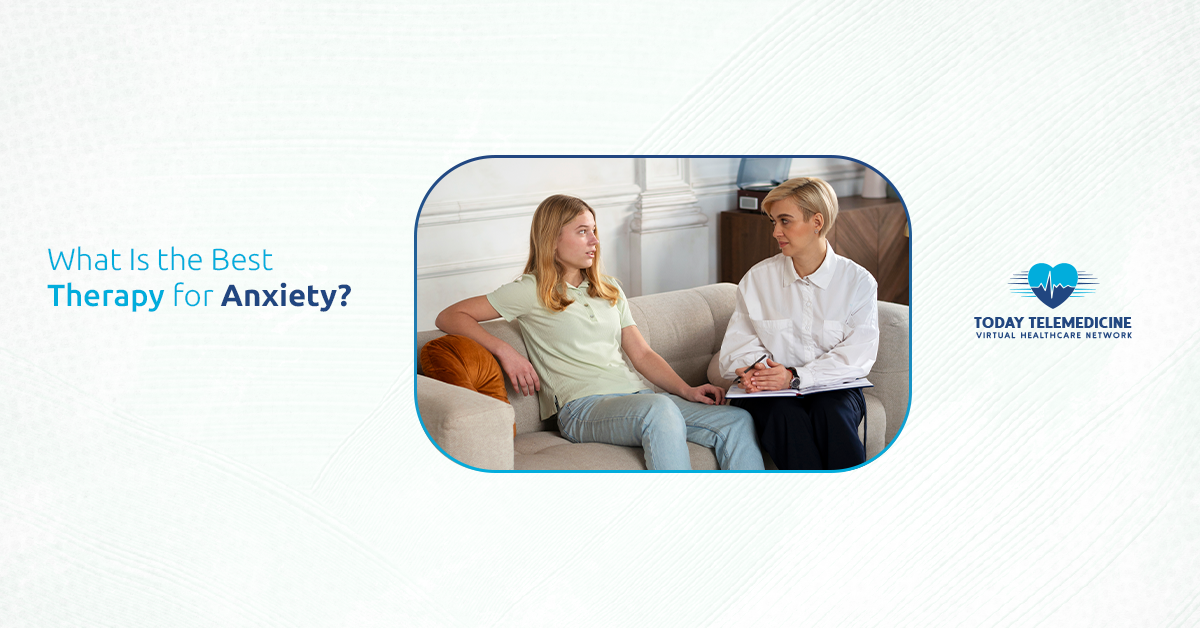Anxiety has a tedency to reveal itself – the familiar knot in your stomach when having a tough conversation or the thought process that keeps you awake after you should have gone to bed.
When this seems familiar, then you are a part of a much bigger discussion.
Years of research have shown us this: Cognitive Behavioral Therapy is consistently ranked at the top when it comes to the treatment of anxiety.
It is not only popular but it is proven.
Why CBT Works for Anxiety
The simple nature of CBT is refreshing.
When it comes to treating anxiety, CBT is by far the most popular option because there is no other treatment with such extensive research backing up its success.
Instead of taking years to unravel each aspect of your past, CBT concentrates on the present, and more to the point, what can be done about the present.
What makes CBT very effective:
- Evidence-based foundation: Decades of research support its effectiveness across different anxiety disorders
- Structured approach: Each session has clear goals and specific techniques to practice
- Measurable results: About 60% of adults receiving CBT-based therapy report significant improvement
- Time-limited treatment: Most people see results within 12-20 sessions
- Practical skills: You learn techniques you can use independently after therapy ends
It is the relationship between your thoughts, feelings, and behaviors — learning to break those anxiety loops before they take hold.
It is not that much about discussing everything, but rather assembling a set of tools that you can apply.
Core CBT Techniques for Anxiety
CBT offers several approaches that directly address how anxiety shows up in your life:
Cognitive Restructuring is about becoming curious about your anxious thoughts rather than accepting them as fact. You learn to ask: Is this thought helpful? Is it realistic? What would I tell a friend in this situation?
Behavioral Experiments invite you to test your anxious predictions in real life. We find that many times our fears are not even true to life, and that can be such a liberating experience.
Exposure Therapy gradually takes you through the situations that you avoid. The most important CBT method applied to specific phobias is exposure therapy, which assists a person in overcoming their fears safely and progressively.
Relaxation Training shows you how to cooperate with the natural reactions that your body has to stress:
- Breathing practices: Easy patterns teach your nervous system that everything is fine
- Progressive muscle relaxation: This is a tensing-releasing practice and allows you to identify where tension is
- Mindfulness practices: Being taught how to remain in the moment rather than be swept away in the worries of what is ahead of them tomorrow
What CBT Sessions Look Like
CBT is rhythmic, which many people are comfortable with.
The first meetings are on getting to know your particular anxiety terrain, what your triggers are, where the anxiety presents itself, and how it has been impacting your life.
Then the work progresses:
- Practicing together: You experiment with these methods during the session, and it is safe to do it there
- Putting it in practice: During the time between sessions, you practice what you have learned in your real environment
- Taking it home: Between sessions, you practice what you’ve learned in your actual environment
- Check-ins: Consistent dialogue on what is going well and what is not working so well
- Developing self-sufficiency: As time passes by, you grow to be self-sufficient with the use of these tools.
Your active involvement in the healing process also implies that CBT is collaborative.
Setting Realistic Expectations
Results usually surface after three to four months of regular efforts.
The good thing about CBT is that the skills are incorporated into you.
Understanding the interaction of your thoughts, feelings, and behaviors enables you to look at difficult situations more clearly and react to them in an improved manner.
Years after your sessions, there will be tools that will serve you.
Next Steps
CBT will help you notice your patterns and form genuinely valuable management skills.
It is convenient, evidence-based, and aims to provide lasting tools.
With Today Telemedicine, it is now easier than ever to connect with a licensed therapist.
This work can start off at the point which is most comfortable to you; in your living room, during lunch at the office, anywhere you can get space to yourself.
Get started today.





